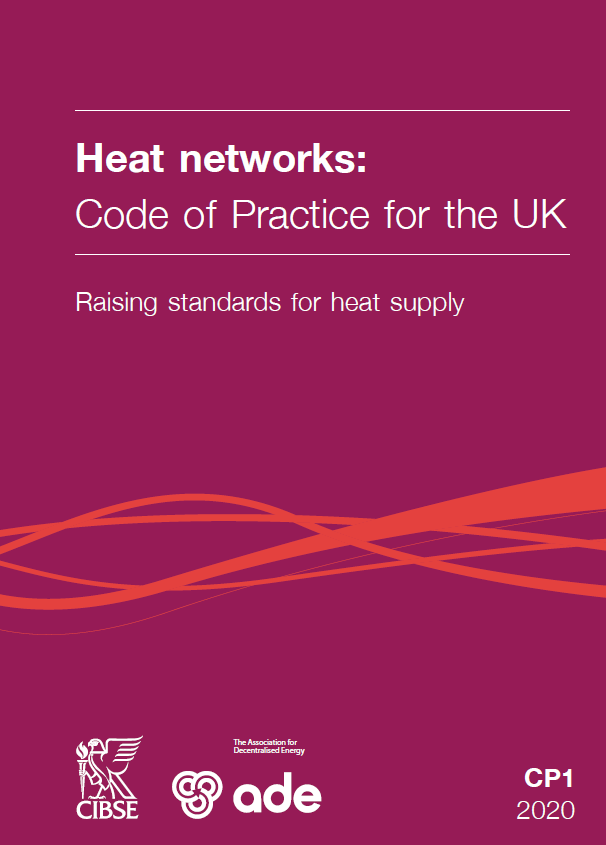CP1 (2020) Heat networks: Code of Practice is a major update to the 2015 version, and a huge step forward for the industry.

The development of heat networks (or district heating) in the UK is increasingly recognised as an important component in the UK’s Clean Growth Strategy: Leading the way to a low carbon future (BEIS, 2017) and the decarbonisation of heat, based on Clean Growth – Transforming Heating (BEIS, 2018a). This is supported by the Committee on Climate Change in Net Zero – Technical Report (CCC, 2019). Heat networks can address climate change and affordable heat challenges by focusing on the following strategic aims:
- to reduce greenhouse gas emissions through the use of a wide range of low- carbon and renewable heat sources
- to improve security of energy supply by diversifying energy sources for heating and reducing dependence on fossil fuel imports
- to offer a supply of heat that is safe, good value, offers the lowest lifecycle cost and contributes to reducing fuel poverty
- to provide a heating service that meets customer needs and offers a high standard of customer satisfaction by being safe, reliable, efficient and well maintained.
A major challenge will be to deliver a high standard of service to customers who will have had good long-term experience using gas-fired boilers. Therefore, a safe, high- quality installation offering good reliability, a long life, low carbon intensity of heat supply and low operating costs will be key. The cost-effectiveness of the heat supply will also depend on achieving low-cost finance over a long period of time and funders will also be looking for long-term performance and reliability.
This updated Code of Practice CP1 (2020) is therefore written to:
- improve the quality of feasibility studies, design, construction, commissioning and operation by setting minimum requirements for projects and identifying best practice options
- deliver energy efficiency and environmental benefits
- provide a good level of customer service
- promote long-lasting heat networks, in which customers and investors can have confidence.
This Code of Practice applies both to heat networks designed to supply new developments and to heat networks that are retrofitted to supply existing buildings. Although many issues are common, networks for new buildings require careful design to keep heat losses low (in percentage terms) whereas the design of networks for existing buildings is often constrained by the existing heating systems in the buildings.
This edition
This second edition of the Code of Practice: Heat networks provides a very significant update to the 2015 version.
The previous edition had been highly successful in establishing minimum standards to improve the quality of district heating projects from concept through to operation; it has also had a strong influence on the procurement of heat networks, and underpins much of the Heat Networks Delivery Unit and Heat Networks Investment Project work done by the UK Department for Business, Energy and Industrial Strategy (BEIS).
However, it was always recognised that the Code of Practice would need to be updated at intervals to reflect new experience and understanding, feedback from the industry, changes in regulation and results from research projects. Probably the most important update has been to make compliance with CP1 easier to verify and check.
A series of fully integrated checklists now presents a more structured and robust toolkit for checking compliance with the Code of Practice. It is hoped that this publication will support the development of a wider heat networks quality assurance scheme, ultimately contributing to the regulation and decarbonisation of the heat sector.
This second edition, however, remains a work in progress on a longer journey for the heat networks sector. There is a clear need to gather a more detailed evidence base, and much more work is needed to develop further guidance and verification in the long term. Having said that, the publication of this second edition is a very significant step forward and aims to take the heat network sector to the next level.
